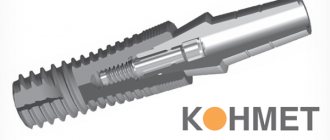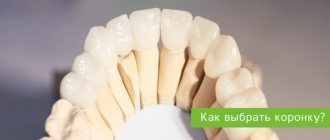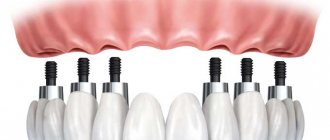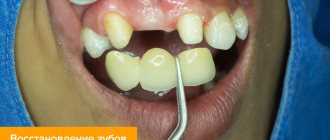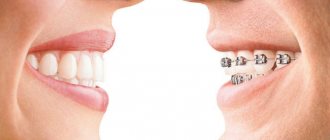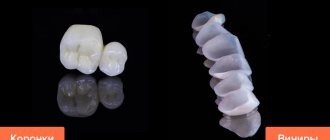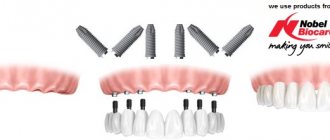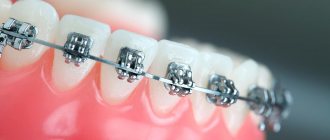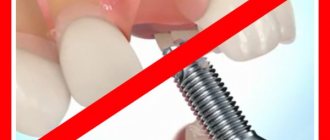Photo: startsmile.ru
Editorial
Filzor Editorial Team
It is not easy for a person who does not understand implantation issues to determine which implants are best to place. When it comes to choosing a suitable titanium root, it is better to rely on the opinion of the implantologist. However, you should immediately remember an important thing - even a branded dental implant will not last long if the doctor made a mistake during the operation.
Features of dental implants in dentistry
The implants are made of titanium alloy. Pure titanium in the finished product is 99%. More expensive models are made from zirconium oxide. But budget options are made from cheap impurities, which complicates the healing process and reduces the service life of the structure.
To maximize implant survival, some manufacturers use spraying with special compounds that make the surface of the structure porous. But such a product will be more expensive.
Structure of implants
The most popular type remains a design consisting of three elements:
- the upper one, which protrudes above the gum,
- a pin equipped with threads for fixation in the jawbone,
- connecting neck.
The implant models used in implantology differ in shape and design:
- pin length can vary from 6 to 16 mm,
- different models of pins differ in thread and completely,
- Dental structures can be one-piece or collapsible.
Types of Dental Implants
Screw
The implants received this name because they are very similar to a screw. Thanks to their special structure and thread, like a self-tapping screw, they are easily screwed into the bone tissue and gums at the required angle in the right place, without making strong cuts. Thus, the healing process does not last long, and the operation is performed in a short time.
Cylindrical
These designs do not have threads, and their shape is more even. The survival rate of the implant lasts faster, since the surface and outer coating are treated. This allows you to create the necessary porosity, thanks to which the product is securely fixed in natural tissues.
Lamellar
These designs are used for those patients who are contraindicated for the installation of root implants due to the small thickness of the jaw bone. It is too thin to fit a cylinder or screw into. The top of the plate structure is intended for fixing artificial crowns, and the lower part is for attaching them to the bone.
To obtain maximum survival rate, the surface of the plates must be porous.
The main advantage of plate implants remains their low price when compared with rhizomatous structures. But their disadvantage is low stability.
Root-like
These implants get their name because they look like a tooth root. The design is presented in the form of a stepped cylinder equipped with threads. Each manufacturer offers implants of a certain shape, structure and uses its own material. But basically they are all titanium screws - self-tapping screws.
In modern dentistry, root-shaped implants are considered the most popular.
Root-shaped products are indicated for high bone density, as well as in the absence of adequate width and height. Sometimes a bone plate is required to obtain bone mass. When the installation of the titanium pin has been completed, the gum walls are sutured. Fixation of the root part of the structure can occur with or without the use of an abutment. The implant takes root within 3-6 months.
Subperiosteal (subperiosteal)
These are implants of a special shape; they are installed above the periosteum. This allows the use of products when there is not enough bone tissue for the necessary implantation, and it cannot be increased.
Externally, the design is voluminous and openwork, made of metal alloys. This creates an even load on the jaw and additional strength to hold the implant. The upper part is installed above the gum, which simplifies and speeds up the process of complete dentures and tooth crown replacement.
Endodontic
This group includes two types of implants – root-shaped and combined. They perfectly replicate the size and shape of natural teeth, but a sufficient amount of bone tissue is required to fix them. Otherwise, it is increased by prescribing a separate operation for the patient. After such implantation, healing occurs within 3-6 months.
If we consider combined structures, then their installation requires a combination of various shapes and inclinations, taking into account the individual characteristics of the structure of the human jaw.
Mini implants
These products are small in size, but their structure is completely identical to standard designs. They are indicated in the following cases:
- as a basis for attaching removable dentures,
- narrow space for an artificial tooth,
- atrophied bone tissue without the possibility of its growth,
- temporary prosthetics.
The main advantage of mini-implants is that the installation process is painless and low-traumatic. The bone is not involved in the process, and, therefore, healing occurs quickly. Immediately after the implant is inserted, the remaining elements can be attached to it.
Kinds
A crown is a dental prosthesis used to preserve a real tooth and its root system or completely replace it if it is completely destroyed.
Crowns differ in composition and can be made from different materials - metal alloys, ceramics or combinations thereof.
Metal-plastic prostheses
This denture option is the cheapest. Inexpensive non-precious metals (chrome, cobalt or nickel) are used as a base . The top is covered with white plastic. Such tooth replacements last a very short period of time, no more than three years. It all depends on the individual conditions of wearing them by the patient.
Over time, the material may darken, deform, crack, and there is also the possibility of allergies and local inflammation at the site of installation of the prosthesis. It is better to resort to the use of metal-plastic crowns as a temporary option if you need to save a tooth here and now without sufficient funds.
Made of ceramics without metal
The material looks very aesthetically pleasing, and even upon close examination you cannot distinguish it from a real natural tooth. There are three types:
- Porcelain (or in other words - pressed ceramics). With the highest levels of aesthetics, they are the most fragile, with an average service life of 5 years. Therefore, they are not recommended for installation on chewing teeth, only on the front teeth or incisors.
- Made from aluminum oxide . Compared to zirconium dioxide, this material has a lighter color, which is preferable in aesthetic dentistry. It also has hypoallergenic qualities. But, unfortunately, it is not so durable. Therefore, it is not recommended for the treatment of chewing teeth.
- Zirconium dioxide . The service life is about 20 years; in addition, it is absolutely compatible with human tissue. Crowns made of this material are quite expensive, which is justified by their characteristics.
Metal
Such crowns are made from alloys of precious or other metals. In the first case, silver, palladium and gold are used (the advantage is that they do not cause allergies). In the second case, steel, chromium, cobalt or steel coated with gold are used (they are durable and strong). The service life of the product is 10–12 years.
Important! It is not advisable to combine several alloys when installing crowns, since in the future you may encounter problems such as a burning sensation and a metallic taste in the mouth. If you once installed steel, then continue to use this material in the future.
Metal ceramics
Crowns made of this material are considered the best option, which will ensure long-term wear and at the same time give an aesthetic appearance to your smile. The base is made of metal, the coating is made of ceramics. Although it is quite difficult to distinguish from a real tooth, it wears very well. The service life of the product is 7–10 years.
There are two types of crowns of this type:
- On alloys of precious metals , which provides them with hypoallergenicity and a more natural appearance due to their yellowish tint.
- On alloys of other metals - cobalt-chrome or nickel-chrome alloys. Such products are cheaper, in rare cases can cause allergies, and are also slightly inferior in external indicators.
The best manufacturers
Nobel Biocare
These are universal designs, as they are used in all cases. The reason is that the pins are cone-shaped and equipped with double threads. They have a triangular method of reconnection and a functional connection between the implant and the bone tissue of the jaw, on which the entire load will be placed. The main advantages of this manufacturer’s designs remain high quality and a lifetime warranty. But the downside is the high price - 40,000-70,000 rubles per unit.
The manufacturer's assortment includes the following models:
- Branemark System,
- Nobel Speedy,
- Nobel Replacement,
- Nobel Active.
Straumann
When making implants, the manufacturer uses the following materials:
- Titanium,
- Ceramics,
- Zirconium,
- Leuko-sapphire.
The surface of artificial teeth is porous due to internal processing. This is what makes the product unique compared to jaw bone tissue. The main advantages of the design remain: wide selection, use of various materials, high quality and long service life. There is one minus - the high price, which amounts to 50,000-75,000 rubles for one system.
Xive
The manufacturer produces products with a unique thread and the ability to be installed in cancellous bone tissue. Of course, it will cost 30,000-40,000 rubles. But there is something to pay for here, since the products are high-quality, durable, take root quickly and are easy to install.
Anthogyr
The manufacturer produces implants using high-precision computerized equipment. High frequency titanium is used, which is treated with two-phase calcium phosphate.
The product has the following advantages:
- can be used for single-stage and multi-stage installation,
- the system is suitable for various types of orthodontic structures,
- simple installation and minimal tissue trauma,
- implant installation can be carried out immediately after tooth extraction,
- the structure takes root quickly due to porosity and special coating
The downside of the product is the planar type of connection with the abutment, which creates a small gap between the elements. This increases the load on the fixation screw and leads to the development of a defect in the abutment seating area.
Astra Tech
This is an Israeli company that produces several types of implants:
- Alpha-Tec . It features a standard parallel-wall layout. Used for bones with medium density.
- Dualfit . These are cone-shaped implants, the surface of which is treated to improve performance. Used to work with bones of various densities.
- Spiral . This product also has a cone shape. Equipped with a thread that secures the tooth firmly into the jaw bone.
- Arrow Press . A very thin cone-shaped implant with a hybrid surface. It allows you to securely fix the structure in the tooth socket. It is used when it is necessary to secure an implant to a small area of bone.
Prosthetic options and materials
For each clinical case, manufacturers offer specific solutions - types of implants:
- intramucosal. The structures are applicable within the framework of mini-implantation - they are implanted through the mucous membrane of the alveolar ridge. The technique is often used for the best fixation of a removable denture;
- submucosal. The products are fixed with magnets to the buttons on the opposite side under the transition fold. Implants help to hold a complete removable denture under the mucosa;
- subperiosteal. It makes sense to place such dental implants when there is severe tissue resorption. The structures take the form of metal frames with prominent supports, which are inserted under the mucoperiosteal flap;
- intraosseous (classical or monoblock). They are fixed into spongy bone tissue. Titanium roots are made in the form of a screw, plate or have a cylindrical shape;
- endodonto-endosseous. The products are used extremely rarely - the rods are inserted into the bone through the roots of the damaged elements.
Most implants are made from titanium - the material is strong, resistant to significant loads, and has biological inertness - reducing the risk of allergies to a minimum.
In addition, for the manufacture of artificial roots they use:
- zirconium dioxide. These dental implants are worth choosing when restoring chewing elements: titanium with zirconium provide wear resistance and durability;
- ceramics. This material produces the most attractive looking products - they are fixed in the frontal zone.
Attention! Impurities in the composition of implants ensure the hardness and durability of the implant, but these impurities should not exceed critical values.
How to choose implants
When choosing an implant, you must seek help from a specialist, since it is impossible to cope with this task on your own.
Each type of implant is suitable for a specific case:
- basal - their installation is carried out if no abnormalities are found in the body, and the bone tissue is in normal condition,
- plate – effective in restoring only the front row ,
- combined – necessary for complex restoration of the dentition after trauma and damage,
- subperiosteal - installed when the condition of the bone tissue is unsatisfactory,
- mini-implants – when restoring one or more teeth, they are needed for aesthetics.
Why implants are the best technology for dental restoration
Implantation compares favorably with other methods of tooth restoration. The operation allows you to restore elements completely from the point of view of not only their functionality, but also the aesthetics of the series. It does not require grinding or depulping adjacent teeth. Installing implants is the only way to prevent jawbone atrophy. However, it is not always possible to count on a successful result of surgical intervention even if high-quality implants are implanted.
An example of dental restoration using implantation:
An artificial root that is screwed in incorrectly may begin to tear away. Even if it engrafts, the result of the operation will not please the patient: the neck of the structure will be exposed, the gums will become bluish - any stranger will be replaced with artificial teeth.
Patients encounter similar unpleasant consequences of implantation because they neglected the careful choice of the doctor. The level of professionalism of an implantologist can already be judged based on the factors that he takes into account when choosing an implant.
